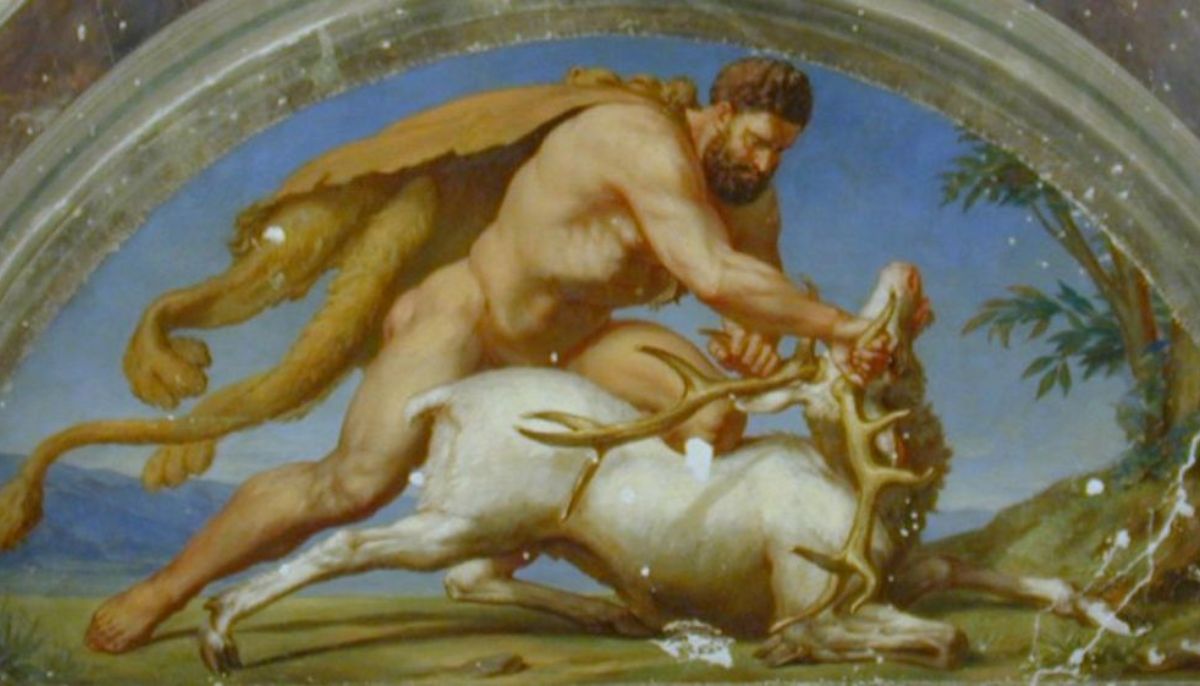Embark on a mythological pursuit of the elusive Ceryneian Hind, a creature of grace and wonder. Explore its significance in Greek myth, the tales it graced with its presence, and its intricate ties to the broader realm of Greek folklore.
What does the Ceryneian Hind look like?

The Ceryneian Hind was a creature of enchanting allure, resembling a deer but possessing an otherworldly beauty. Its most striking feature was its antlers, which gleamed with a brilliant golden hue. This radiant adornment distinguished it from common deer, marking it as a creature of extraordinary rarity and grace.
Its coat, too, was a marvel, shimmering with the iridescence of precious metals. In the realm of wildlife, the Ceryneian Hind embodied ethereal splendor, captivating all who beheld it.
What made the Ceryneian Hind special?
Beyond its breathtaking appearance, the Ceryneian Hind held a special significance in Greek mythology. Its golden antlers were not merely ornamental; they were deemed sacred, lending the creature an aura of divine connection.
Pursuing the Ceryneian Hind was no ordinary hunt; it became a quest of mythical proportions, a challenge that tested the mettle and valor of even the most courageous hunters.
Its elusive nature and awe-inspiring beauty elevated it beyond mere wildlife, making it a symbol of natural wonder and sacred reverence in the rich tapestry of Greek lore.
The Mythology of the Ceryneian Hind
The Ceryneian Hind played a significant role in the Twelve Labors of Heracles (Hercules). Its origin is attributed to Cerynitis, a region in Greece, where this magnificent hind lived. The hind was no ordinary deer; it possessed a golden coat and was known for its incredible speed and agility.
Artemis’s deer and the Ceryneian hind
In Greek mythology, Artemis, the goddess of the hunt, held a particular affinity for deer. Among her sacred deer was the Golden-Horned Deer, known as the Elaphoi Khrysokeroi.
Four of these were harnessed to her chariot, symbolizing her mastery over these graceful creatures. The fifth deer, known as the Kerynitian (Cerynitian) Hind, was free to roam untamed.
This particular hind held a revered status, considered sacred to Artemis and possessing a coat of shimmering gold. Its legendary swiftness and agility added to its mystique. This very hind became entwined with the epic tale of Heracles’ Twelve Labors.
Heracles and the Ceryneian Hind
As part of his arduous trials, Heracles was tasked with capturing the elusive Kerynitian Hind alive, an assignment that epitomized his formidable challenges. The hind’s sacred status under Artemis rendered this task even more daunting.
Heracles’ pursuit of this creature required extraordinary hunting prowess and a delicate approach, respecting its divine connection with the goddess.
Heracles embarked on a relentless pursuit of the Kerynitian Hind for an entire year, showcasing unmatched determination and skill as a hunter. This prolonged endeavor highlighted his perseverance despite seemingly insurmountable challenges, solidifying his reputation as a hero of extraordinary prowess.
The story of the Kerynitian Hind underscores the vital lesson of respecting the sacred in Greek mythology. It is a powerful reminder of the consequences that befall those who interfere with creatures held dear by the gods.
For Heracles’, capturing the Kerynitian Hind is a pivotal moment, emblematic of the trials and triumphs that defined his mythic quest.
Want to know more about the creatures and monsters of Greek Mythology?

Explore more articles like this in our broader series on Greek monsters. To delve even deeper into the world of mythical creatures, be sure to check out our comprehensive hub article on the monsters of Greek mythology.






